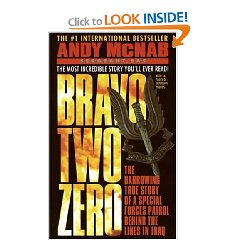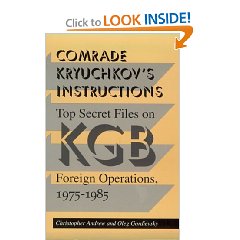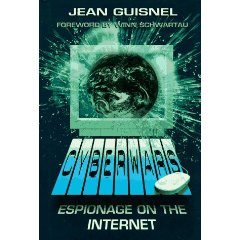Review: Brassey’s International Intelligence Yearbook, 2002 Edition
3 Star, Intelligence (Government/Secret)I found both the updates and the further readings to be a very mixed bag, with too many countries that I am familiar with suffering from what appears to be either an over-reliance on one or two primary sources or somewhat random notation. It is clear to me that this book does *not* benefit from a systematic literature review, nor is it really current with the great web sites that are available, both in general terms as well as with specific country orientations–on top of the limited coverage, less than a third of the world, this really reduces its value.
This book has the potential to be a five-star reference work of enormous value, if it makes the following changes:
1) Create a broader board of advisors. The author performs heroically for one man, but clearly does not have the global network of true experts that is needed to make sure his coverage is world-class.
2) Add a State of Intelligence report to the front of the book, with regional overviews. The emergence of a European intelligence community, the impact of the Kosovo war on this movement as well as NATO, NATO's publication of an open source intelligence handbook, etc., the specific points of failure for 9-11 as well as the Afghan campaign that failed to capture the Al Qada leadership, all should be in there, together with the Homeland Security initiative and new relations among nations now quasi-committed to improved cooperation against terrorism–while decapitating their programs against crime. To be a proper reference work, this book must also take care in the overview to tease out the threads of progress among the varied intelligence communities that exist-national civilian, military, law enforcement, investigative journalism, business intelligence, and academic studies on intelligence. The fact that it does not reference such vital organizations as the Society of Competitive Intelligence Professionals, or the International Association of Law Enforcement Intelligence Analysts, for example, suggests that the book is being put together along very old lines of thinking, and is not yet coming to grips with the dramatic changes occurring in the real world of intelligence.
3) The publisher, or a non-profit foundation, must fund a proper literature review. Even for the United States, the most obvious country, most of the intelligence reform books published between 1999 and 2002 and listed by the Council on Intelligence do not appear in this reference work, nor does it retain the Aspin-Brown Commission Report or the House Permanent Select Committee Report on IC21, as references of continuing relevance.
4) The index must be expanded to include all authors and organizations.
5) The acronyms must be expanded to be truly comprehensive. A one page listing that is mostly military ranks and failed to include the acronyms PfP (Partnership for Peace), OSINT (open source intelligence), or C4I (command, control, communications, and intelligence–a vital aspect of understanding where intelligence fits in the larger picture) is simply not serious.
Bottom line: I will keep this book as a light-weight reference, but I will not buy it again unless the publisher gets serious about producing a quality product that is truly international and reflective of the intelligence reform and intelligence failure lines of inquiry that are well-known to serious professionals who understand that intelligence is the core competency of both governments and organizations in the age of information.

Review: The No-Spin Zone–Confrontations with the Powerful and Famous in America
3 Star, America (Founders, Current Situation), Culture, Research, MediaReview: Roosevelt’s Secret War–FDR and World War II Espionage
3 Star, Intelligence (Government/Secret)Perhaps most importantly, we gain some insights into how Presidents, even when properly informed by intelligence (e.g. of Pearl Harbor in advance, or of the lack of threat from domestic Americans of Japanese descent) must yet “go along” and provide either inaction pending the public's “getting it”, or unnecessary action (the internments) to assuage public concern.
There are enough tid-bits to warrant a full reading of the book, but only for those who have not read widely in the literature of intelligence and/or presidential history. The British lied to the President and grossly exaggerated their intelligence capabilities, in one instance presenting a man “just back from behind the lines” when in fact he was simply on staff and lying for effect. We learn that the Department of State was twice offered, and twice declined, the lead on a global structure for collecting and processing intelligence. We learn that FDR himself concluded that Croatia and Serbia would never ever get along and should be separate countries.
On the NATO side, we learn that Eisenhower went with bad weather and the invasion succeeded in part because of a successful deception and in part because of Ike's courage in going forward in the face of bad weather–fast forward to how weather incapacitates our high-technology today. Most interestingly, we learn that FDR finally approved Eisenhower as leader of Overload, in lieu of his favorite, General Marshall, in part because he recognized that the allied joint environment required a general and a politician in one man.
This book is a hybrid, attempting to mesh presidential history with intelligence history, and perhaps this should gain the author some margin of tolerance. Unfortunately, in focusing on the relationships among the various intelligence principals and the president, he seriously passes over the enormous contributions of military as well as civilian and allied intelligence to the larger undertaking, and one is left with the narrow impression that American intelligence consisted largely of a number of self-serving clowns vying for Presidential favor.
The flaws inherent in a Federal Bureau of Investigation dominated by J. Edgar Hoover, and the lack of cooperation between the FBI and other major intelligence activities that continues today, are noted throughout the book.
Review: Fastalliances–Power Your E-Business
3 Star, Best Practices in ManagementOne of a few books I bought in an airport bookstore rather than on amazon, my first thought is that the amazon process really does help–this book is flashy enough to get one to buy it on the fly, but probably would not survive in open competition when alternatives are easily visible in an electronic bookstore.
The author notes that the book was written in 60 days. It shows, and the reader is the one that suffers. I have no doubt that the author, an attractive person by the photo, is a wonderful speaker with many insights to offer. The book, however, is not well laid-out and one has the feeling that 100 different briefings have been sorted into chapter files and dumped into the book. What couldn't be fit into the text was turned into sidebar or text figure.
The book includes a CD-ROM I will never use, as well as a URL for a web address I will never visit. I would rather they had put the money into better editing, more white space, and a much better structure for the book.
My bottom line: the book should not be ignored, but I would recommend that the executive interested in these concepts have a strong younger manager of promise read this as one of 3-4 other similar books, and distill all of them into a ten page memo.











